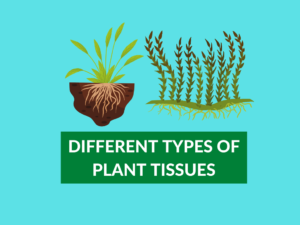Meristematic Tissue vs. Permanent Tissue: Understanding the Differences
What are Meristematic Tissues?
Meristematic tissues are a group of undifferentiated cells that are responsible for the growth and development of plants. These tissues are found in regions called meristems, which are typically located at the tips of roots and shoots.
Examples of Meristematic Tissues
Some examples of meristematic tissues include apical meristem, intercalary meristem, and lateral meristem. Apical meristem is responsible for the elongation of the plant, intercalary meristem is found in between mature tissues, and lateral meristem is responsible for the increase in girth of the plant.
Uses of Meristematic Tissues
Meristematic tissues play a crucial role in plant growth and development. They help in the formation of new organs, such as leaves, stems, and roots. These tissues also aid in the repair and regeneration of damaged tissues. Additionally, meristematic tissues are involved in the production of secondary growth in plants.
What are Permanent Tissues?
Permanent tissues, unlike meristematic tissues, are fully differentiated and specialized cells that have lost their ability to divide. These tissues perform various functions in the plant body and provide structural support.
Examples of Permanent Tissues
Some examples of permanent tissues include parenchyma, collenchyma, and sclerenchyma. Parenchyma tissue is involved in photosynthesis, storage, and secretion. Collenchyma tissue provides mechanical support to the plant, while sclerenchyma tissue provides additional strength and rigidity.
Uses of Permanent Tissues
Permanent tissues serve different purposes based on their types. For example, parenchyma tissues are responsible for the exchange of gases, storage of nutrients, and wound healing. Collenchyma tissues provide flexibility and mechanical support to the plant. Sclerenchyma tissues contribute to the rigidity and strength of the plant.
Differences Between Meristematic Tissues and Permanent Tissues
| Difference Area | Meristematic Tissue | Permanent Tissue |
|---|---|---|
| Growth and Development | Responsible for growth and development | Specialized and do not contribute to growth |
| Location | Found at the tips of roots and shoots | Distributed throughout the plant body |
| Cell Division | Undergo cell division | Do not undergo cell division |
| Cell Type | Undifferentiated cells | Fully differentiated cells |
| Function | Growth, repair, and regeneration | Photosynthesis, support, and strength |
| Examples | Apical, intercalary, and lateral meristem | Parenchyma, collenchyma, and sclerenchyma |
| Ability to Divide | Can divide and differentiate into other cell types | Lost the ability to divide |
| Location in Plant Body | Primarily found at the growing regions | Distributed across various parts of the plant |
| Growth Type | Primary growth | Primary and secondary growth |
| Cell Wall Composition | Thinner cell walls | Thicker cell walls |
Conclusion:
In summary, meristematic tissues are responsible for growth and development in plants, while permanent tissues are fully differentiated and serve various specialized functions. Meristematic tissues are found in specific regions of the plant and retain the ability to divide, contributing to primary growth. On the other hand, permanent tissues are distributed throughout the plant body, have lost the ability to divide, and are involved in both primary and secondary growth. Understanding these differences can help in comprehending the complexities of plant structure and function.
People Also Ask:
1. What is the role of meristematic tissue in plant growth?
Meristematic tissues are responsible for the primary growth of plants, leading to an increase in length and the formation of new organs.
2. How do permanent tissues differ from meristematic tissues?
Permanent tissues are fully differentiated, specialized cells that have lost the ability to divide, while meristematic tissues are undifferentiated cells involved in growth and development.
3. Can meristematic tissues be found in mature plant organs?
No, meristematic tissues are typically found in regions of active growth, such as the tips of roots and shoots. They are not commonly found in mature plant organs.
4. What is the significance of permanent tissues in plants?
Permanent tissues provide structural support, perform various functions such as photosynthesis and storage, and contribute to the overall strength and rigidity of the plant.
5. Can permanent tissues undergo cell division?
No, permanent tissues have lost the ability to divide. They remain in their differentiated state and do not contribute to the growth of the plant.



